As you venture into the world of trading, coincidentally, mastering the 7 essential technical indicators can significantly enhance your decision-making process. These indicators act as your guiding compass in the volatile waters of the market, providing crucial insights into potential trends and entry/exit points.
Understanding how each indicator functions and when to apply it can be the key to unlocking successful trading strategies. So, are you ready to navigate the complexities of the financial markets armed with these powerful tools?
On-Balance Volume Indicator
The On-Balance Volume (OBV) indicator, developed by Joe Granville in the 1960s, is a crucial tool for analyzing volume flow in securities based on price changes. OBV measures buying pressure by adding volume on up days and subtracting volume on down days, providing insights into potential price movements.
Rising OBV confirms bullish trends, indicating increasing buying pressure and potential price hikes. Traders use OBV to confirm trends, predict reversals, and receive early signals of possible price changes.
Accumulation/Distribution Line Indicator
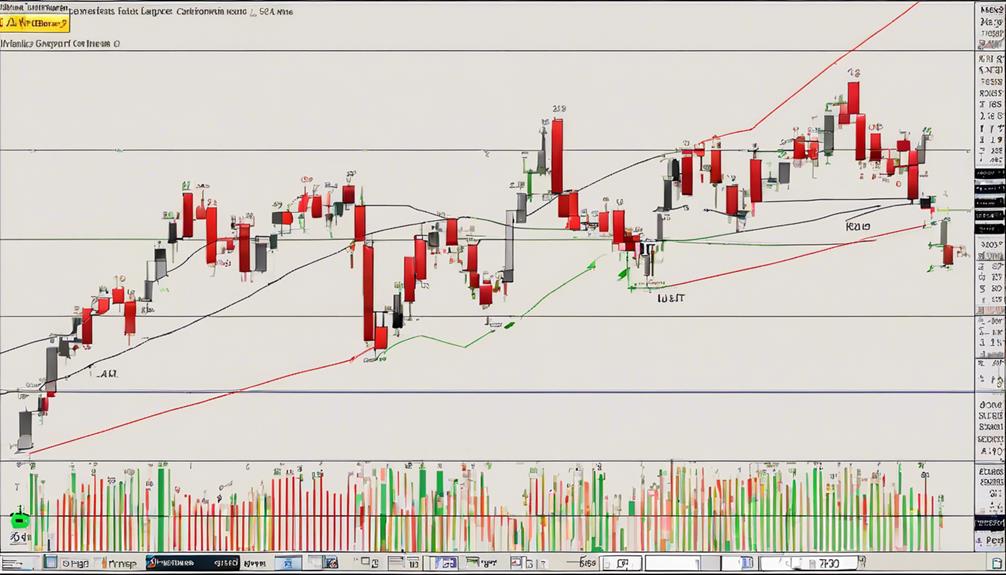
When analyzing the Accumulation/Distribution Line Indicator, you'll observe how it gauges the relationship between volume and price movements in the market. This indicator aids in evaluating the strength of buying or selling pressure within a security.
Volume and Price Relationship
Explore how the relationship between volume and price is analyzed through the Accumulation/Distribution Line indicator, providing valuable insights into market sentiment and potential trading opportunities.
The indicator evaluates buying pressure by comparing volume and price movements, confirming trends and potential reversals. Rising Accumulation/Distribution Line values indicate accumulation and potential price increases, while falling values suggest distribution and potential price decreases.
Traders utilize this tool to identify entry and exit points based on the interplay between volume and price. By understanding the Accumulation/Distribution Line's analysis of volume and price, traders can make informed decisions and capitalize on market sentiment shifts.
This indicator serves as a crucial element in assessing market dynamics and making strategic trading choices.
Market Strength Assessment
Analyzing market strength through the Accumulation/Distribution Line Indicator provides valuable insights into the flow of money within a security based on price and volume data. Traders use this technical analysis tool to assess the strength of buying or selling pressure, helping to identify support and resistance levels.
Here's why the Accumulation/Distribution Line Indicator is crucial:
- Money Flow: It measures the inflow and outflow of money within a security.
- Market Sentiment: Helps traders gauge the overall sentiment in the market.
- Price Movements: Indicates potential price changes based on the relationship between price and volume data.
Understanding this indicator can aid in making informed decisions and predicting potential market movements accurately.
Average Directional Index Indicator
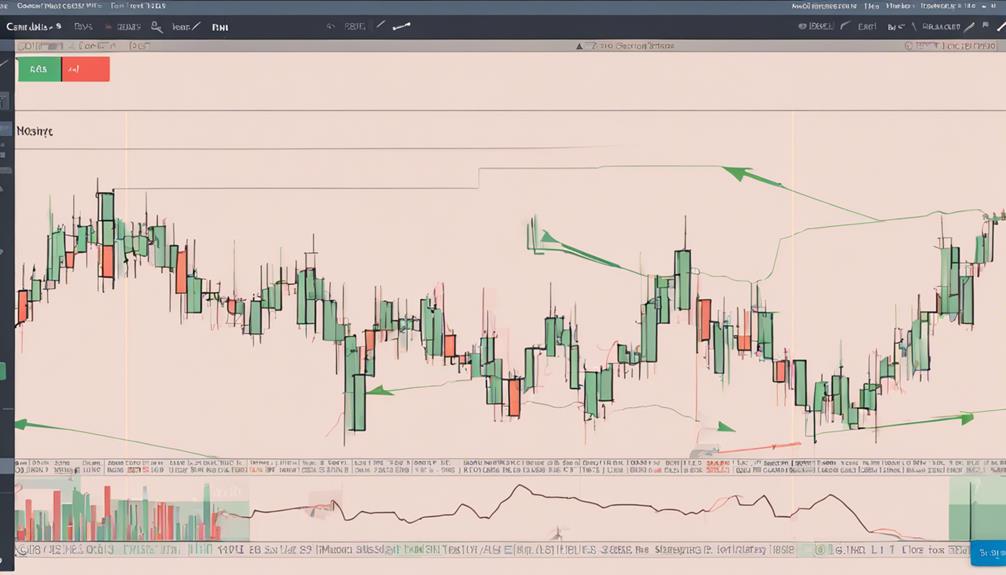
The Average Directional Index (ADX) is a key technical indicator utilized to gauge the strength of a trend within a security. ADX values range from 0 to 100. Readings above 25 suggest a strong trend, while readings below 20 indicate a weak trend.
It's important to note that ADX doesn't provide information on the trend direction but focuses solely on trend strength. Traders often combine ADX with other indicators to confirm the strength of a trend and to filter out false signals.
Aroon Indicator
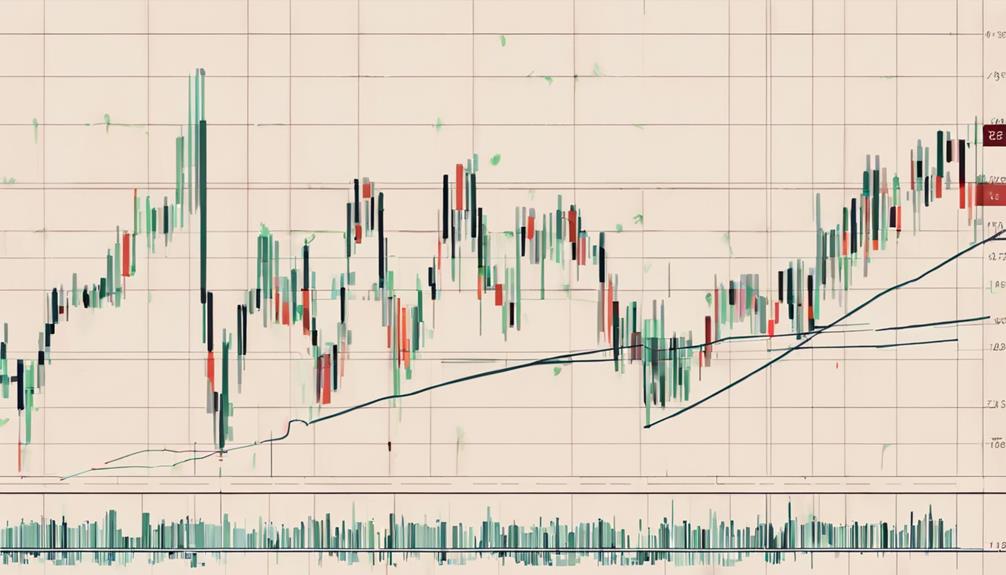
The Aroon Indicator comprises two lines, Aroon-Up and Aroon-Down, that gauge the time elapsed since the highest high and lowest low were recorded.
Higher Aroon values, ranging from 0 to 100, suggest stronger uptrends (Aroon-Up) or downtrends (Aroon-Down).
Keep an eye out for crosses between these lines as they can indicate potential shifts in trends or momentum.
Aroon Indicator Basics
Utilize the Aroon Indicator to gauge trend strength and potential reversals through its two key lines, Aroon Up and Aroon Down, which track time since the last high or low within a specified period. Here are some key points to consider:
- Aroon Up measures the strength of the uptrend, indicating how long it has been since the highest high occurred.
- Aroon Down evaluates the strength of the downtrend by calculating the time elapsed since the lowest low was recorded.
- The crossover of Aroon Up and Aroon Down lines helps identify potential trend reversals, with Aroon Up crossing above Aroon Down signaling a possible uptrend and vice versa for a downtrend.
Understanding these basics can assist you in interpreting Aroon Indicator signals effectively.
Interpreting Aroon Signals
To effectively interpret Aroon signals within the Aroon Indicator, focus on the crossovers between the Aroon-Up and Aroon-Down lines to identify potential shifts in trend direction and strength.
When the Aroon-Up line crosses above the Aroon-Down line, it suggests a bullish trend, while the reverse indicates a bearish trend. These crosses can help confirm trends and provide entry/exit signals for traders.
By utilizing the Aroon Indicator alongside other technical analysis tools, you can enhance its effectiveness in pinpointing optimal trading opportunities in the market.
Keep a close eye on these signals as they can offer valuable insights into potential market movements, guiding your trading decisions for better outcomes.
MACD Indicator
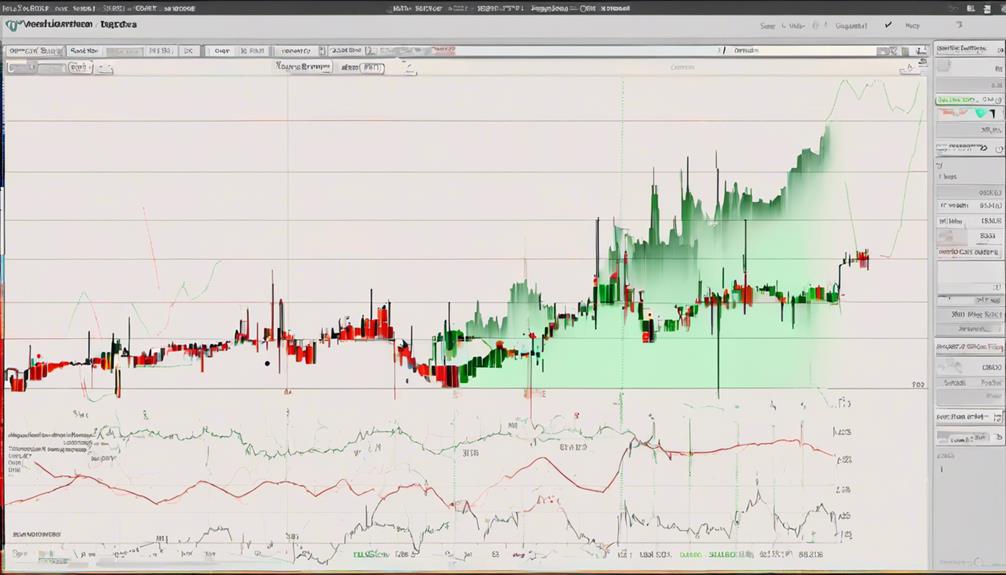
When analyzing stock trends, consider employing the MACD Indicator to identify shifts efficiently. Here's why it's essential:
- Trend Identification: MACD, short for Moving Average Convergence Divergence, is a momentum indicator that helps spot changes in a stock's trend direction.
- Signal Generation: Traders rely on MACD crossovers and divergences between the fast and slow moving averages to generate buy or sell signals.
- Visual Representation: The MACD histogram, derived from the MACD line and signal line, visually illustrates the difference between the two moving averages. This representation aids in confirming trends and identifying potential trend reversals.
Utilize the MACD Indicator for a comprehensive analysis of stock movements.
Relative Strength Index Indicator
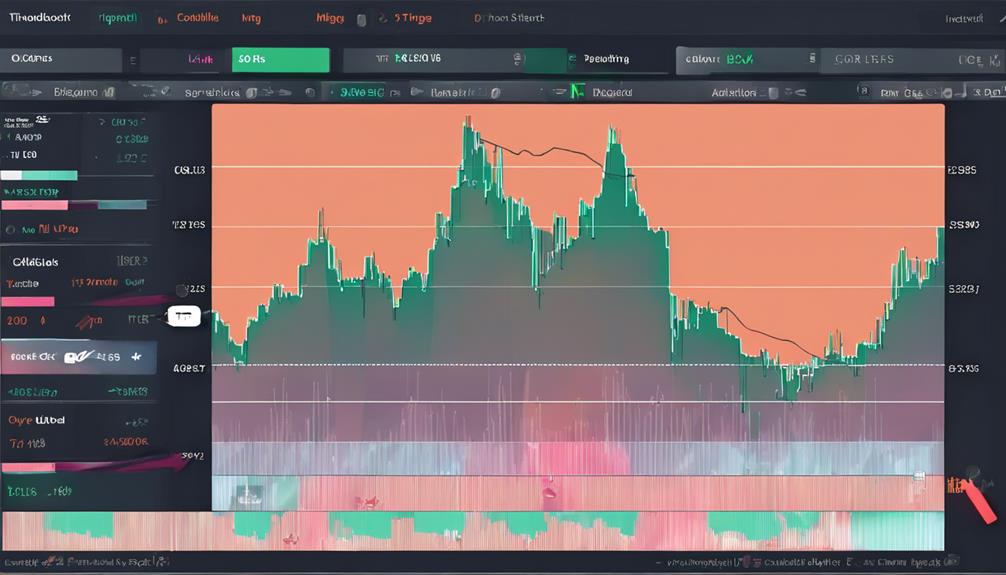
Understanding the Relative Strength Index (RSI) is crucial for beginner traders looking to effectively analyze market trends and determine potential entry or exit points. RSI, a momentum oscillator ranging from 0 to 100, helps identify overbought (above 70) and oversold (below 30) conditions. Traders use RSI for trend confirmation, spotting trend reversals, and generating buy or sell signals.
Calculated based on average gains and losses over a set period, typically 14 days, RSI aids in assessing trend strength. By utilizing RSI, traders can make informed decisions about market entry and exit points. It's an essential tool among technical indicators for evaluating price movements and understanding potential trend shifts.
Stochastic Oscillator Indicator
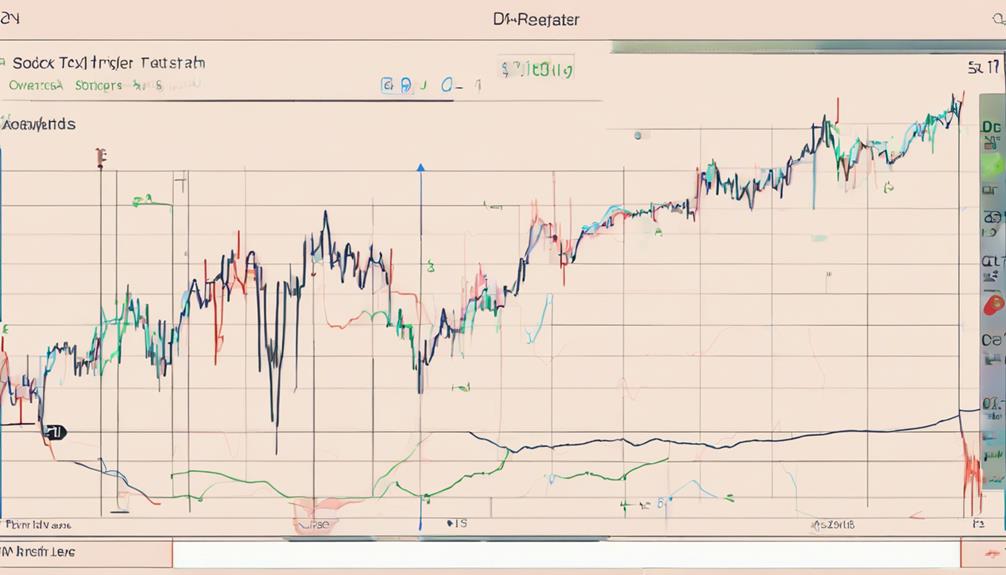
Exploring the Stochastic Oscillator Indicator reveals a valuable tool for assessing market momentum and identifying potential entry and exit points based on price range comparisons. Here are some key points to consider:
- The Stochastic Oscillator is a momentum indicator that helps determine overbought and oversold conditions.
- It consists of %K (fast) and %D (slow) lines, offering buy/sell signals through crossovers and extreme levels.
- Traders use this indicator to gauge market momentum, spot potential reversals, and pinpoint entry/exit signals efficiently.
This indicator is crucial for traders as it aids in understanding market dynamics and making informed decisions regarding trade entries and exits.
Can You Explain How to Use These Essential Technical Indicators for Beginners?
If you’re new to trading, a beginner’s guide to technical indicators can help you navigate the markets. Start by learning the basics of popular indicators like moving averages, RSI, and MACD. Understand how to interpret their signals and incorporate them into your trading strategy for better decision-making.
Frequently Asked Questions
What Are the Basics of Technical Indicators?
When delving into technical indicators, remember they simplify complex market data to guide your trading decisions. By grasping these fundamentals, you'll gain confidence in analyzing price trends and determining optimal entry and exit points.
What Is the Best Indicator for Beginners?
For beginners, the best indicator is the Relative Strength Index (RSI). It helps identify overbought and oversold conditions, guiding your entry and exit points. RSI ranges from 0 to 100, with values above 70 signaling overbought and below 30 indicating oversold levels.
What Are the Top 5 Technical Analysis Indicators?
To excel in technical analysis, focus on key indicators like Moving Average Crossover, RSI, Bollinger Bands, Moving Average Ribbon, and MACD. Master these tools to navigate market trends effectively and make informed decisions.
What Are the Four 4 Basic Principles of Technical Analysis?
You need to understand the four basic principles of technical analysis: price discounts everything, trends are key, history repeats, and volume confirms trends. These fundamentals guide traders in predicting market movements effectively.
Conclusion
You've now learned about 7 essential technical indicators for beginners, each with its own unique role in analyzing the markets.
Did you know that over 80% of successful traders use technical analysis as part of their strategies?
By incorporating these indicators into your trading approach, you can increase your chances of making informed decisions and navigating the financial markets with confidence.
Keep learning and practicing to sharpen your skills and achieve your trading goals.
